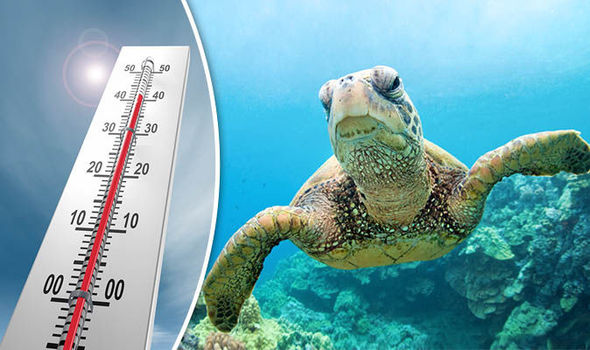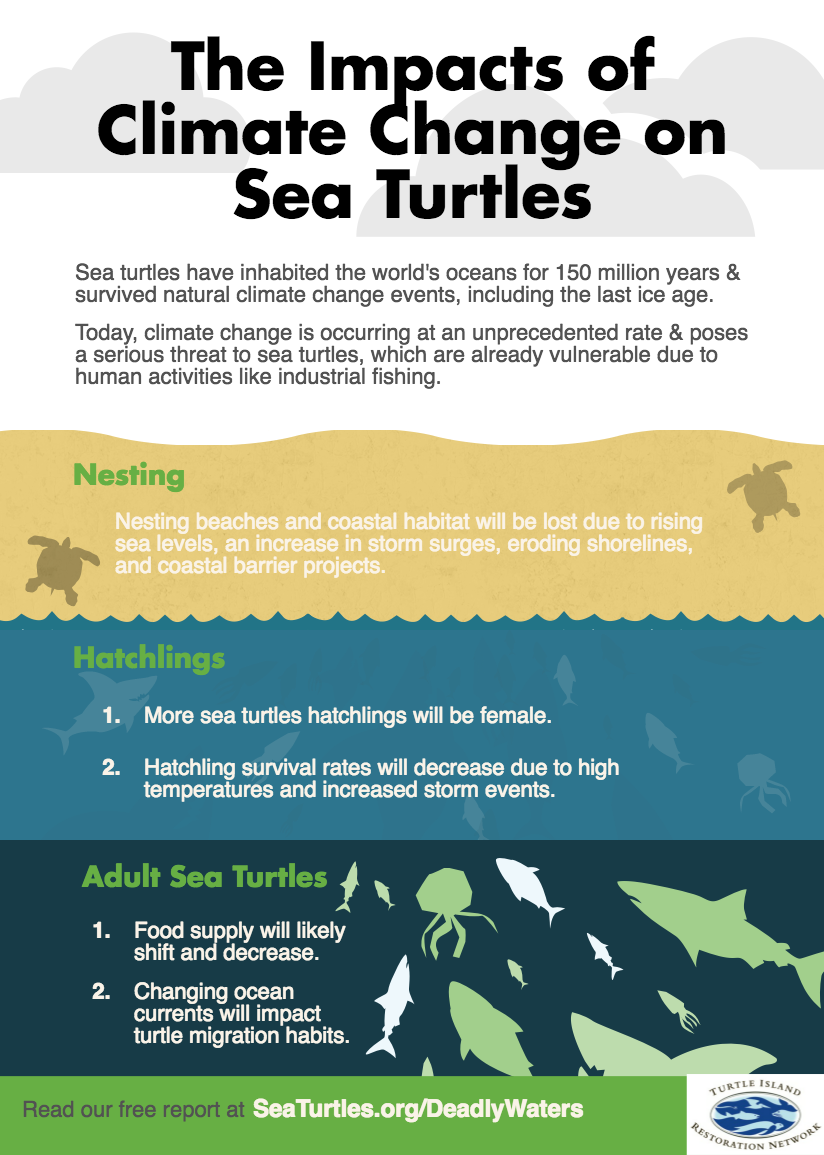Indonesia’s Sea Tutrles: Facing Climate Change Threats

Photo Credit : Getty
Sea turtles in Indonesia play a crucial role in maintaining the delicate balance of coastal and marine ecosystems. The country, known for its vast archipelagic landscape, is home to six of the seven sea turtle species found worldwide, including the green turtle (Chelonia mydas), olive ridley turtle (Lepidochelys olivacea), and leatherback turtle (Dermochelys coriacea). However, these ancient marine reptiles face mounting threats due to climate change, which manifests in rising sea temperatures, shifts in ocean currents, sea level rise, and increasingly frequent extreme weather events. These climatic changes significantly impact sea turtle migration patterns and reproductive success, both of which are closely tied to stable environmental conditions. Research in Java’s southern coastal areas has documented how extreme climate events between 2016 and 2018, characterized by tidal floods and high waves, led to substantial habitat loss in key nesting sites, exacerbating the vulnerability of sea turtle populations. Despite the severity of these disruptions, adaptive management strategies to counteract the impact of climate change on sea turtle conservation remain largely undeveloped.
The Influence of Sand Temperature on Hatchling Sex Determination

The impacts of
climate change on
sea turtles (Photo Credit : Turtle Island Restoration Network)
A defining biological trait of sea turtles is temperature-dependent sex determination, where the ambient temperature of nesting sand dictates the sex ratio of hatchlings. Warmer sand temperatures tend to yield a predominance of female hatchlings, while cooler conditions favor the production of males. With global temperatures on the rise, projections indicate an increasing skew toward female hatchlings, posing a severe risk to long-term population stability. Field studies conducted in Banyuwangi, Indonesia, revealed that incubation conditions in natural nests resulted in higher hatchling success rates compared to semi-natural nesting environments. The latter exhibited increased soil acidity, greater temperature fluctuations, and lower hatchling survival rates. This suggests that climate-induced temperature variations may not only alter hatchling sex ratios but also compromise overall hatching success, intensifying the reproductive challenges sea turtles face in warming environments.
Rising Sea Temperatures and Its Impact on Feeding Habitats
Climate change affects not only nesting conditions but also the critical foraging habitats that sustain sea turtles throughout their life cycle. Seagrass beds and coral reefs, which serve as primary food sources for green turtles, are experiencing widespread degradation due to increasing sea surface temperatures. Recent ecological assessments in Wawonii Barat, Southeast Sulawesi, have highlighted alarming declines in seagrass density and species diversity, directly impacting the feeding patterns of green turtles. The loss of vital foraging grounds forces turtles to expend greater energy searching for food, ultimately affecting their health, reproductive output, and survival rates. Additionally, coral reef degradation, driven by mass bleaching events, further reduces marine biodiversity, disrupting the intricate ecological relationships upon which sea turtles depend.
Coastal Erosion and Sea Level Rise
Sea level rise presents a profound challenge for sea turtle conservation by diminishing the availability of nesting beaches. Coastal erosion, exacerbated by frequent storm surges and tidal inundation, has led to the progressive disappearance of historically significant nesting grounds. In the southern coastline of East Java, research has documented how rising sea levels and increased cyclonic activity have reshaped the landscape of critical nesting areas. Severe erosion in regions such as Alas Purwo and Meru Betiri National Parks has displaced nesting turtles, forcing them to seek alternative, often suboptimal, sites for egg-laying. Furthermore, erratic precipitation patterns and storm-induced flooding during nesting seasons have been observed to reduce hatching success, as excess moisture in sand substrates leads to increased embryonic mortality. Without intervention, these climate-driven stressors threaten to significantly curtail reproductive success in affected sea turtle populations.
The Impact of Climate Change on Sea Turtle Migration
- Migration Patterns and Dependence on Ocean Currents
Sea turtles undertake extensive migratory journeys spanning thousands of kilometers between feeding and nesting sites. These migrations are largely guided by ocean currents, which provide energy-efficient travel pathways. However, climate change is altering these currents, disrupting traditional migration routes. Studies along Indonesia’s southeastern waters, including Rote Ndao, have indicated shifts in the timing and duration of migratory movements among leatherback and green turtles. Such changes may be attributed to variations in oceanic thermal gradients, which influence navigation cues. Consequently, many turtles may be unable to reach their intended nesting beaches at the appropriate time, potentially leading to mismatches between peak nesting periods and optimal environmental conditions.
- The Effect of Changing Sea Temperatures on Migration Habitats
Beyond currents, variations in sea temperature play a critical role in shaping migration behaviors. Research has shown that some sea turtle species rely on temperature gradients to orient themselves during migration. Warmer-than-usual ocean conditions have been found to disrupt these navigational cues, potentially leading turtles into regions with insufficient food resources or suboptimal nesting substrates. In extreme cases, this disorientation may contribute to an increase in strandings, particularly for juvenile turtles that lack the adaptive experience of older individuals.
- The Impact of Extreme Weather on Migration
The increasing frequency of extreme weather events, including tropical storms and typhoons, further complicates migration patterns. Severe storms can devastate nesting beaches, flood incubation sites, and create strong currents that interfere with turtle navigation. Observations in Aceh and Java’s coastal regions have noted a rising number of displaced sea turtles following major storm events. These disruptions not only heighten mortality risks but also reduce the likelihood of successful reproduction by delaying or preventing nesting altogether.
Adaptive Conservation Strategies to Mitigate Climate Change Impacts
- Ecosystem-Based Habitat Management
A holistic, ecosystem-based approach is essential for mitigating the effects of climate change on sea turtles. This entails the protection and restoration of key habitats, including nesting beaches, foraging areas, and migratory corridors. Efforts in Rote Ndao have demonstrated that community-led conservation initiatives, which incorporate habitat restoration projects such as seagrass transplantation and artificial reef construction, can help bolster sea turtle resilience against environmental changes. However, broader governmental support and policy integration are required to scale up these interventions across Indonesia’s vast coastal landscapes.
- Education and Community Empowerment
Empowering coastal communities through environmental education and sustainable livelihood programs plays a crucial role in sea turtle conservation. In Aceh Jaya, initiatives focused on hatchling rearing and controlled-release programs have successfully engaged local fishers in conservation efforts, reducing human-induced threats to turtle populations. Additionally, ecotourism projects have provided alternative income sources, encouraging local stakeholders to invest in long-term habitat preservation rather than exploitative activities such as illegal egg harvesting.
- Adaptive Conservation Policies
Existing conservation policies must evolve to address the growing challenges posed by climate change. Proactive measures, such as relocating vulnerable turtle nests to more stable environments, have already been implemented in certain regions. In Banyuwangi, for instance, controlled incubation sites have been established to mitigate the effects of fluctuating sand temperatures. However, more research is needed to refine these techniques and develop targeted policies that integrate climate resilience into national and regional conservation frameworks.
Conclusion
- Climate Change Impacts on Sea Turtles
The effects of climate change on sea turtles in Indonesia are profound, encompassing alterations in nesting success, feeding behavior, migration patterns, and overall population stability. Rising temperatures, sea level rise, and extreme weather events have collectively intensified the threats facing these endangered species, necessitating immediate and sustained conservation efforts.
- Recommendations for Conservation Strategies
To ensure the long-term survival of Indonesia’s sea turtle populations, conservation strategies must be both adaptable and ecosystem-driven. Strengthening habitat protection, fostering community engagement, and refining policy interventions will be crucial in mitigating climate-induced risks. With coordinated efforts from governmental agencies, conservation groups, and local communities, it is possible to develop resilient frameworks that safeguard these ancient marine reptiles against an increasingly unpredictable environment.
-Rika Novida

